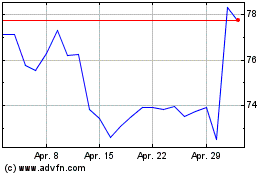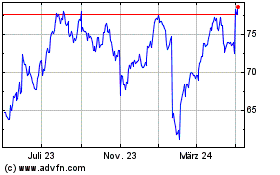(FROM THE WALL STREET JOURNAL 1/13/16)
By Jacob Bunge and Rachel Feintzeig
A feat of corporate and fiscal engineering, Dow Chemical Co. and
DuPont Co.'s planned megamerger hinges on finding the right
chemistry with about 100,000 employees.
Senior leaders who have spent decades at the two giants poised
to be dismantled are coping with upended career prospects and
attempting to keep their staff focused amid the merger of two
companies with a combined value of $103 billion.
At the same time, they could find themselves in line for plum
positions when the new company -- DowDuPont -- eventually separates
the combined businesses into three units focused on agriculture,
industrial materials and specialty products expected within three
years.
Recruiters, coaches and executives who have weathered deals and
integrations say it is a tough process.
"On one side of your mind you're saying, 'Tomorrow will be like
today.' You go about and do your job," says Robert Lynn Oakes, who
worked for Rohm & Haas Co. when Dow acquired the chemical maker
in 2009. He stayed for three years afterward before leaving in
2012. "In the back of your mind, you're looking for opportunities,"
he said.
Executives aim to close the deal by year's end, and staffing
changes are likely to follow. Corporate leaders have said they plan
to eliminate about $3 billion in annual costs before spinning off
the units.
The companies already have taken steps to shed thousands of
jobs, separate from the deal. The moves also could put many
managers in play.
John Touey, a principal with Radnor, Penn.-based executive
search firm Salveson Stetson Group Inc., said executives typically
become more receptive to outside recruiters 90 to 120 days after an
announcement -- a time when leaders are still closing the deal, but
can't yet execute detailed integration planning, he said.
"When an organization can't articulate what this executive's
place is going to be in the new organization, the more of a flight
risk they become," Mr. Touey said.
Edward Breen, DuPont's chairman and chief executive, said in an
interview that he has spoken extensively with senior-level managers
at DuPont since the deal was announced in December, stressing the
scale and heft of the spinoff companies and instructing senior
officials to spread the word among staff in an effort to reassure
and motivate employees.
"The human capital side is the most important part of this,"
said Mr. Breen, who will be the CEO of DowDuPont.
At Dow, managers have grown accustomed to change following a
decade in which the company spun off some businesses and bought
others, said CEO Andrew Liveris.
Still, he acknowledged that portraying deals as "a win-win" for
staff is difficult. "No one wants their cheese moved," said Mr.
Liveris, who will be executive chairman of the combined company.
"No one wants instability."
Privately, some managers at both companies say they are feeling
upbeat about the merger-to-split plan. Yet others have begun
exploring job opportunities elsewhere, say people familiar with the
matter.
Their options appear limited, though. The slumping farm economy
and slowing growth in overseas markets mean competitors are feeling
pain. Monsanto Co. plans to cut 16% of its global workforce, while
3M Co. last year outlined plans to lay off about 1.7% of its
workforce.
Mr. Breen, who separated multiple businesses at Tyco
International Ltd. during his time as CEO there from 2002 until
2012, has said combining the two chemical giants will benefit
managers -- after all, there will be three C-suites to fill, not
one.
Mr. Liveris said he also is preaching focus and calm to keep
workers on task, especially those whose jobs likely won't be
affected by the merger. "The greatest risk during this period of
uncertainty is you drop the ball on existing business," he
said.
To gear up executives to lead the spinoffs, Mr. Breen said he
and Mr. Liveris will include them in investment and strategy
decisions well ahead of the breakup.
At DuPont, Mr. Breen is using uncertainty to motivate his
managers, just as he did at Tyco, telling those in line to lead
spinoffs that their future jobs depend on their teams' performance
during the transition. "When I did this at Tyco, the excitement of
these management teams. . .was so strong, they were working day and
night," he said.
Annual executive turnover at merged companies have averaged
double the normal rate for nearly a decade following deals,
according to research by Jeffrey Krug, dean of the business school
at Bloomsburg University of Pennsylvania.
"The greater degree to which you integrate assets, the higher
the rates of turnover, because integration is disruptive," he
said.
(END) Dow Jones Newswires
January 13, 2016 02:47 ET (07:47 GMT)
Copyright (c) 2016 Dow Jones & Company, Inc.
DuPont de Nemours (NYSE:DD)
Historical Stock Chart
Von Jun 2024 bis Jul 2024

DuPont de Nemours (NYSE:DD)
Historical Stock Chart
Von Jul 2023 bis Jul 2024
